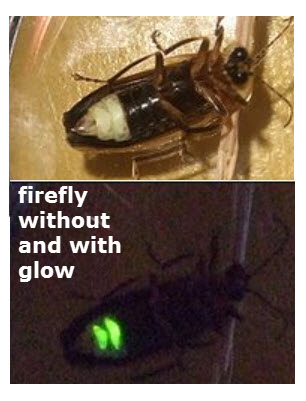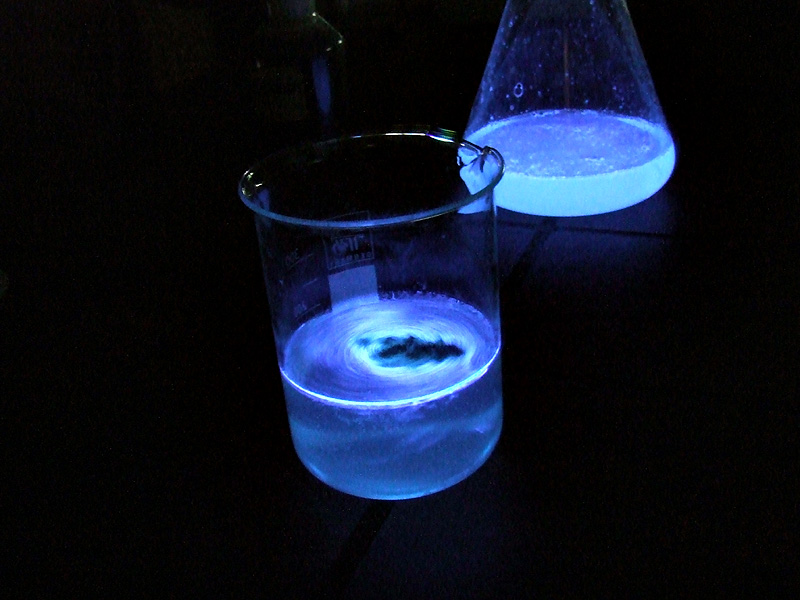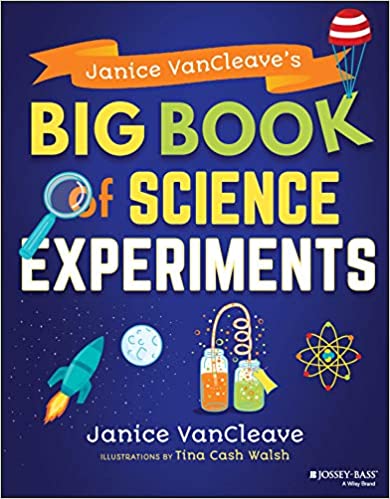Luminescence Is Cold Light

Cold light is visible light produced by processes other than heating. Light sticks are an example of cold light, which is produced when chemicals are mixed together and the energy released is in the form of visible light.
The firefly in the photo gives off light that like the light stick is produced by a chemical reaction with visible light being the released energy.
Luminescence refers to any cold light. The term ‘luminescence’ was introduced in 1888 by Eilhard Wiedemann.
Luminescence can be caused by: chemical reactions, electrical energy, subatomic motions, or stress on a crystal.
Types of Luminescence
Bioluminescence, light emission by a living organism, such as fireflies.

Chemiluminescence, a result of a chemical reaction, such as glow sticks or luminol plus hemoglobin (chemical in blood). The glowing containers shown here contain mixtures of blood and luminol.
Electroluminescence: Light produced when an electric current is passed through a substance. An electroluminescent (EL) device is similar to a laser in that photons(units of light energy) are produced by the return of an excited electron to its ground state, but unlike lasers EL devices need much less energy to operate and do not produce coherent light. One kind of EL is an LED (light emitting diode), such as Christmas tree lights. LEDs present many advantages over incandescent light sources including lower energy consumption and longer lifetime.
Cathodoluminescence is an optical and electrical phenomenon whereby a beam of electrons is generated by an electron gun (e.g., cathode ray tube) and then impacts on a luminescent material such as a phosphor, causing the material to emit visible light.
Mechanoluminescence is visible light emission resulting from any mechanical action on a solid. Examples are:
- Triboluminescence is an optical (visual) phenomenon in which visual light is generated when chemical bonds in a material are broken as a result of the material being pulled apart, ripped, scratched, crushed, or rubbed. Scientists do not fully understand this light producing process, but it is believed that the light results from the separation of electric charges leaving one side of the fracture positively charged and the other negatively charged. If the charge build up is great enough, an electric discharge across the gap occurs with the emission of light energy.
Triboluminescence can be observed when breaking sugar crystals (especially Wint-O-Green Life Savers) and peeling adhesive tapes. - Fractoluminescence and triboluminescence produce light in the same way. The difference is that fractoluminescence refers only to cold light produced by the fracturing of materials.
- Piezoluminescence is caused by pressure that results only in elastic deformation.
Elastic deformation means the material can be stretched or twisted out of shape, but when the deforming pressure is removed, the material returns to its original shape. Thus, piezoluminescence differs from triboluminescence in that the material does not break. - Sonoluminescence is the emission of short bursts of light from imploding bubbles in a liquid when excited by sound.
Photoluminescence, a result of absorption of photons (units of radiant energy) by substances that are fluorescent or phosphorescent.
Fluorescence, is the emission of photons (units of radiant energy) that are perceived as colors of light. This occurs as a result of high energy photons, such as Ultraviolet radiation (UV light) striking phosphors, which are chemicals that absorb high energy photons and emit lower energy photons (visible light).Note: Materials that fluoresce only do so during the time that the high energy radiant energy is being absorbed.
Examples of Fluorescence
1. The exoskeleton of scorpions contain phosphors. At night, scorpions can be located using a black light. The UV radiation emitted by this light causes the scorpion to fluoresce.
2. See, Glo Germs for ideas for teaching kids proper hand washing as well as how germs can spread.
3. A Fluorescent Powder is Used to Represent Germs. This powder as well as a black light can be purchased from Educational Innovation online.
Phosphorescence, like fluorescence, is visible light emitted as excited electrons return to their normal positions called ground state. The difference being that the release of energy is slower for phosphorescence. While materials that fluoresce stop emitting light as soon as the exciting energy is removed, phosphorescent materials continue to glow for seconds to hours after the excitation energy is removed. Thus, these materials will glow-in-the-dark.
Phosphorescent Pigment can be purchased from
“Education Innovation” online. You will find information about phosphorescence and ideas for different experiments.
Big Book of Science Experiments
A book of fun informative experiments about astronomy, biology, chemistry, earth science, and physics.
(Paid Link)
